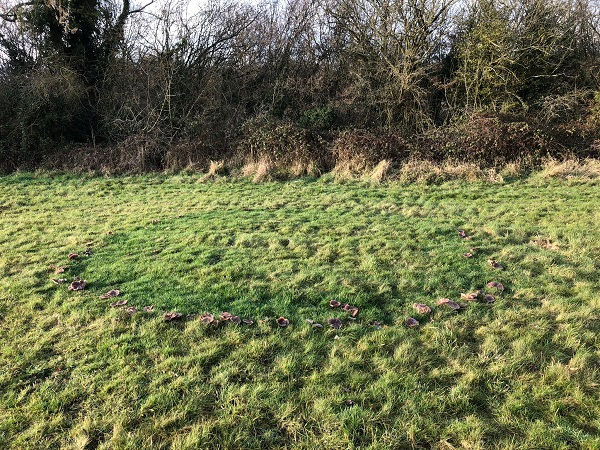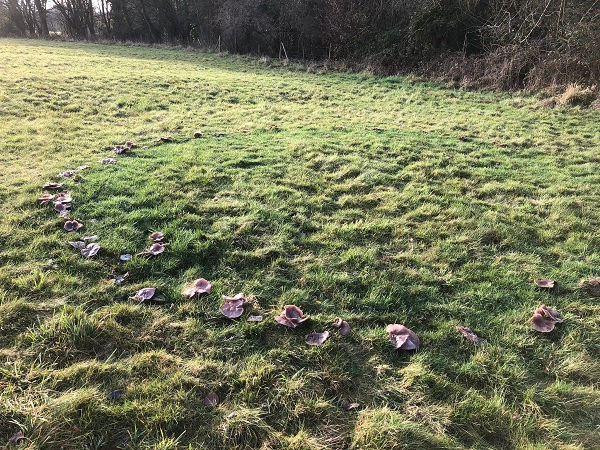Field blewit - Lepista saeva
- The Foraging Course Company
- May 7
- 2 min read

Edible mushroom - novice Season - autumn to winter Common names Field blewit, blue leg, blue foot
Scientific name meaning: Lepista is Latin for goblet, and Saeva is from the Latin Saevus, meaning wild or savage
Habitat  The field blewit is found most often in grassland and occasionally woodland. It is a saprobic mushroom living on dead and decaying organic matter under the sward or leaf litter. |
Overall structure and growth  Growing in rings, the field blewit is a fleshy mushroom with a deep purple stem. It is very cold tolerant and it is not unusual to find it with ice on its cap. |
Cap  The fleshy cap is cream to buff-grey and dome-shaped. It can be a 5 to 15cm wide and has an inrolled margin. Mature specimens can have an uneven edge. |
Gills and spores  Starting off pale cream, the crowded gills turn more buff as they age. They are sinuate (attached to the stem via a small tooth-like attachment) or sometimes free of the stem. The spore colour is cream to pale pink-buff. |
Stem  Sturdy and 1 to 3cm wide, the fibrous stem is flushed purple, especially in younger specimens. The base of the stem, which can reach 6cm tall, is often swollen. There is no ring/skirt. |
Flesh, smell and taste  The flesh is buff to cream coloured and particularly fleshy in the cap. The smell and taste is perfumed or floral. |
Possible lookalikes  Could be confused with purple stemmed webcap (Cortinarius) species. However, they often have a rust-brown spore deposit on their stems and are mycorrhizal with trees, so will grow near to them. Webcaps also lack a floral/perfumed smell. Field blewits are predominantly grassland species. |
Use as a food Must be cooked and can be used exactly as a cultivated mushroom. It has a strong fragrant flavour, so works well with cream/cream substitutes Hazards This mushroom can grow on roadside grass verges where it can accumulate traffic-related toxins. It is advisable to avoid harvesting from the sides of busy roads
Use in herbal medicine and medicine None known
If you are suffering from any ailment or need medical advice, please see your General Practitioner Other uses None known at time of writing Importance to other species Provides food for a number of invertebrates and their larvae
Always stay safe when foraging. You need to be 100% sure of your identification, 100% sure that your foraged item is edible, and 100% sure that you are not allergic to it (it is good practice to always try a small amount of any new food you are consuming). If in doubt, leave it out!









Comments